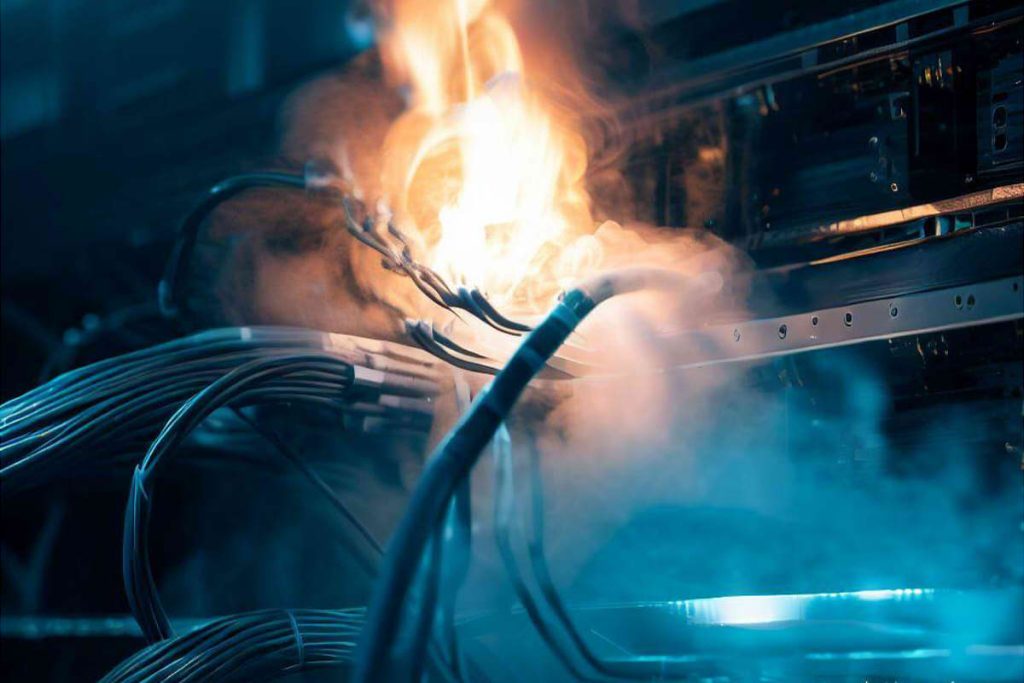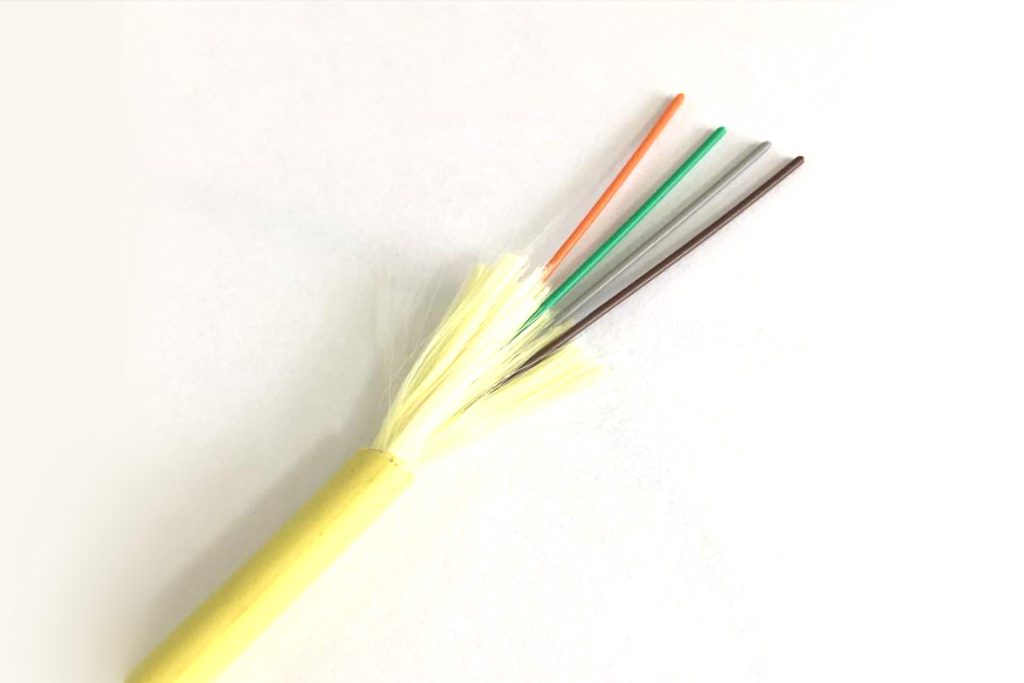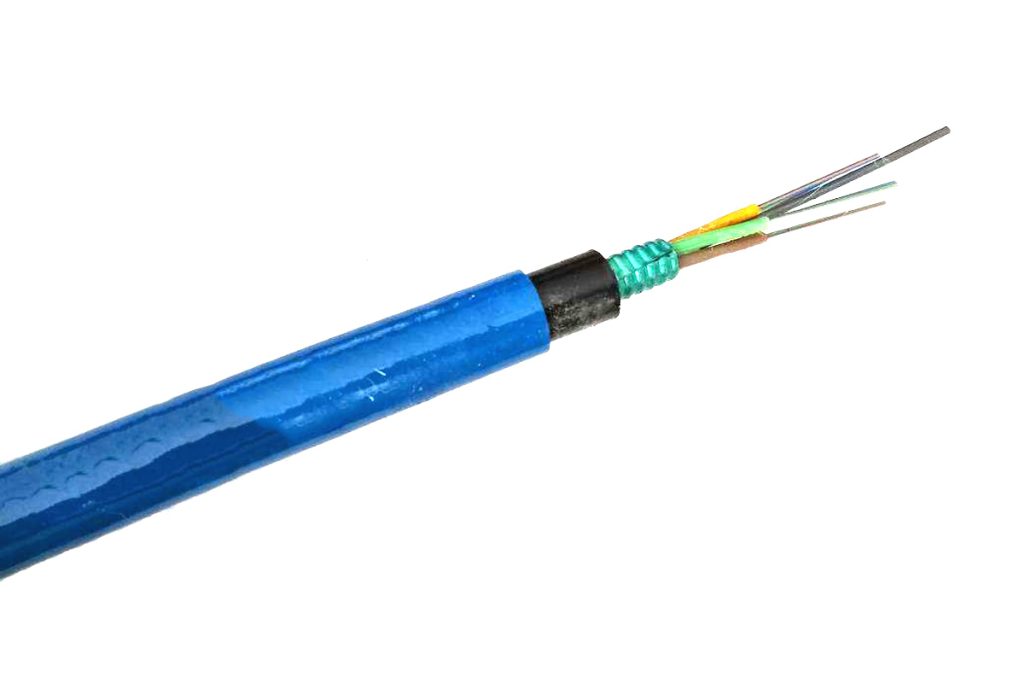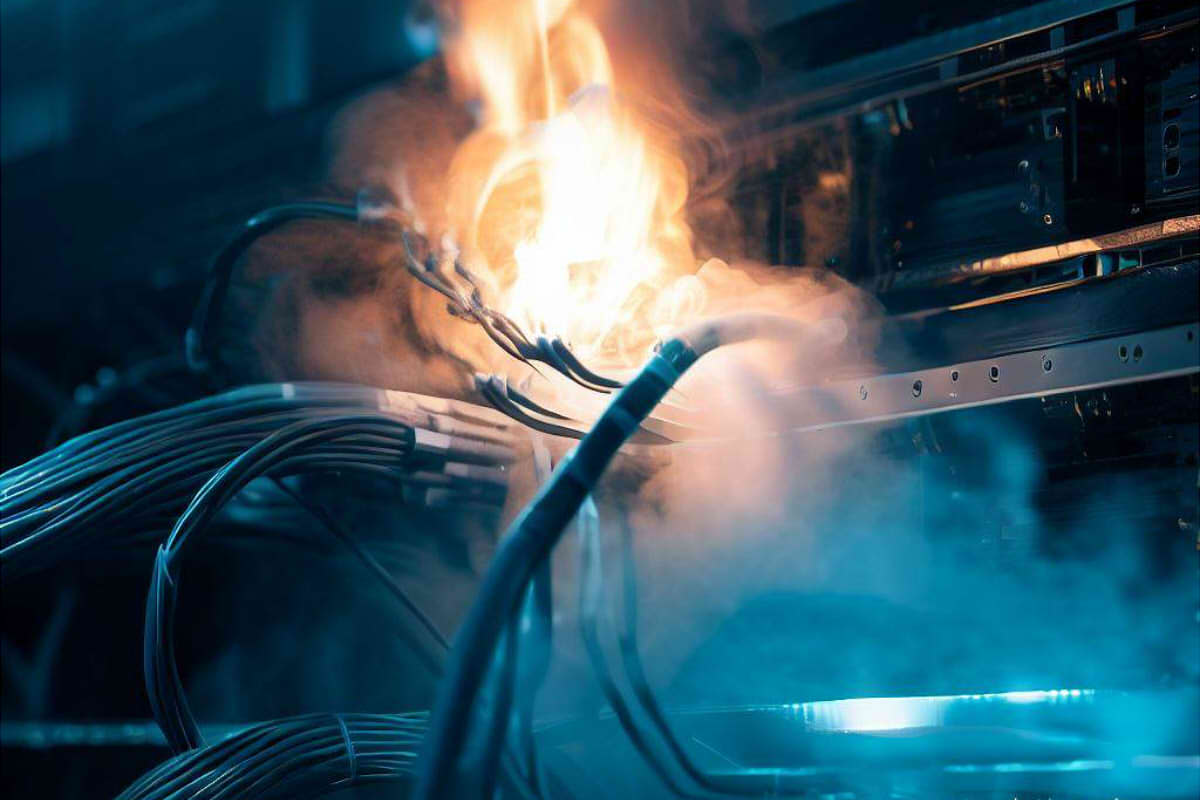Fireproof fiber optic cable is a safe and reliable option for data transmission. This type of cables has a special flame retardant polyethylene or flame retardant PVC sheath instead of a conventional sheath. This modification in the materials does not alter the structure, dimensions or transmission properties of the cable.

Table of Contents
- Fireproof Fiber Optic Cable: Ensuring Security and Performance
- Fireproof Categories for Fiber Optic Cables
- Applications of Fireproof Fiber Optic Cable
- Future Perspectives of Fire Retardant Fiber Optics
Fireproof Fiber Optic Cable: Ensuring Security and Performance
The key component of flame retardant fiber optic cables is the flame retardant outer sheath, to which a flame retardant is added. This flame retardant is a chemical substance that acts effectively to prevent fires.. When exposed to high temperatures, the flame retardant releases a large amount of inert gas, creating a protective layer that prevents the spread of flames.
In the case of fiber optic cables designed for indoor use, materials such as PVC or fireproof PVC are generally used. These materials must have specific characteristics, how to be smooth, bright, flexible and easy to peel. It is important to note that low quality fiber optic cables may have a poor exterior finish., which can cause them to stick to the airtight inner cover and aramid.
Secondly, Fiber optic cables intended for outdoor installations typically have a polyethylene jacket and a reinforced layer. In this case, the outer skin of the cable must be smooth, bright, of uniform thickness and without small bubbles. Las armed optical fibers ensure adequate protection against adverse weather conditions and guarantee optimal performance in outdoor environments.
Fireproof Categories for Fiber Optic Cables
In the NEC (US National Electrical Code), Fiber optic cables are classified into different categories depending on their fireproofing.. These categories include OFNP/OFCP, OFNR/OFCR, OFNG/OFCG the OFN/OFC.
OFNP/OFCP
OFNP/OFCP is the highest flame retardant grade for fiber optic cables. These cables turn themselves off within the 5 meters from the point of flame spread when exposed to a flame directed by a fan. Besides, does not emit toxic or corrosive gases. Commonly used in ventilation ducts and pressurized return air systems in communications wiring applications.
OFNR/OFCR
OFNR/OFCR is the second most flame resistant classification for fiber optic cables. These cables turn off by themselves unless 5 meters from the point of flame spread when exposed to a flame directed by a fan. Unlike OFNP, have no smoke or toxicity requirements. They are used in building pipelines and horizontal lines.
OFNG/OFCG the OFN/OFC
OFNG/OFCG and OFN/OFC are commercial grade, general purpose fiber optic cables, respectively. These cables are not specifically designed to resist flames. They are used in environments where flame resistance is not an important requirement.
LSZH

LSZH fiber optic cables (low smoke and halogen free), They are widely used due to their fire retardant ability. Halogen-containing flame retardant polymers, such as polyvinyl chloride (PVC), they used to be used, but they had the disadvantage of releasing large amounts of smoke and producing corrosive and toxic gases when caught on fire..
Los LSZH special cables they are little smoky, little toxic, little corrosive and highly flame retardant. The LSZH classification does not specifically refer to a flame retardant classification, but generally complies with IEC standard 60332, namely, OFN classification.
Applications of Fireproof Fiber Optic Cable
Flame retardant fiber optic cables have a wide variety of applications, especially in information transmission and monitoring systems in the telecommunications sectors, broadcasting, transportation and energy. These cables provide a reliable solution to ensure secure data transmission in various industries..
In the field of telecommunications, Flame retardant fiber optic cables are widely used in urban fiber optic networks, data centers and mobile communications base stations. These cables provide a reliable, high-speed connection for the transmission of information in telecommunications systems.. Its flame retardant capacity guarantees safety in case of fire, which is especially crucial in densely populated urban environments where telecommunications infrastructure must be secure and reliable.
In the transportation sector, Fireproof fiber optic cables play a vital role in highway monitoring and signal transmission systems, railways, meters and other transport infrastructure. These cables allow effective and reliable communication for traffic control, security systems supervision and operations management. Las flame retardant properties of these cables They guarantee the integrity of the transport infrastructure and the safety of users, since they can withstand emergency situations and prevent the spread of fires throughout communication systems.

In the energy field, Flame retardant fiber optic cables are used in the supervision and control of power generation and distribution systems. These cables enable the secure transmission of critical data and signals in power plants., substations and distribution networks, contributing to the efficiency and reliability of the energy system.
Future Perspectives of Fire Retardant Fiber Optics
The flame retardant fiber optic cable market shows promising growth and is expected to continue expanding in the coming years. According to projections, The global market is estimated to reach approximately 9.441,1 million dollars in 2022. Besides, This market size is expected to increase to around 12.200 million dollars for the year 2029, which represents a compound annual growth rate (CAGR) of 3,7% during the period of 2023 a 2029.
As more advances are implemented and its use is promoted in various areas, demand for flame retardant fiber optic cables will continue to increase. Growing awareness of the importance of data transmission security and fire protection drives adoption of these cables in key sectors like telecommunications, broadcasting, transportation and energy.
The expansion of fiber optic networks, Growing telecommunications infrastructure and demand for high-speed, low-latency transmission are factors contributing to market growth. Besides, increasing security requirements in critical applications, such as traffic monitoring in transportation and reliable signal transmission in broadcasting, Further Support Demand for Flame Retardant Fiber Optic Cables.
With the continuous development of science and technology, as well as the growing adoption of these solutions in various industries, The application of flame retardant fiber optic cable is expected to have increasingly broader prospects.

